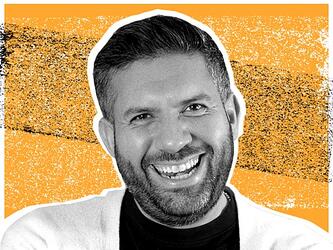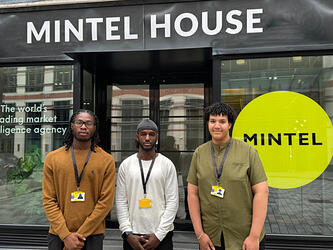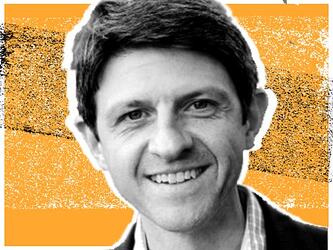Intelligent pathways
Businesses face a set of increasingly tough questions. Long-run growth rates, which have been slowing for 50 years, are approaching stagnation point. Business volatility is on the rise as markets are destabilised by technology, shifting values, political turbulence, and resource and planetary challenges. According to the Financial Times, the top 700 global businesses saw profits decline by 25% in the five years to 2017.
There are, of course, pockets of growth to be found in even the toughest business environments, although they are harder to see. The companies that spot them tend to be better attuned to how social patterns are evolving, consumer spending is changing and markets are responding and being re-shaped.
This is part of a bigger story about business value, which is becoming increasingly intangible. Most of a corporation’s financial value now lies in its corporate, customer and brand equity – a far more fragile asset than factories and equipment. Between 1975 and 2015, the share of market cap of S&P 500 companies accounted for by tangible assets fell from more than 80% to less than 20%. Intangible assets are more vulnerable to external change and their value can shrink surprisingly quickly, as Kraft Heinz discovered at the end of February.
In our report on responsive businesses and Intelligence Capital™, published by the Market Research Society, we argue that businesses that find growth in this world are pulled by markets, both existing and potential, rather than being pushed by the current capabilities of the business. They also learn more quickly that their environment is changing, and translate this learning into effective action. Responsiveness is a form of business agility that is driven by the needs of customers – present and future – and alerts the business to new and emerging external risks. These things don’t happen by accident. They need to be designed into the business. Intelligence Capital – like physical and human capital – is a source of competitive advantage to those who are committed to using it.
Understanding Intelligence Capital
Intelligence Capital can be defined as ‘a comprehensive knowledge asset coupled with the capability to use that asset to identify and activate growth opportunities’. It is about knowing what you need to know, and how best to use it, to make a difference to business performance.
It combines information, processes and people to scan the wider environment, the marketplace and the business’ own performance, to understand how each of these is changing and act on this. This creates new value, finds growth opportunities and increases the speed of the business and the flexibility needed to learn and respond to change.
Intelligence Capital has three components:
- Structural intelligence: This is the sum of what the business knows about its customers, operating environment and broader business context to identify growth opportunities and risks, spotting market changes more quickly than the competition
- Activation intelligence: This is the knowledge used to define the actions businesses take to capture those growth opportunities, including acquisition of new knowledge as well as learning from past activities. Activation intelligence is how the organisation responds more quickly and effectively to the market
- Human intelligence: Structural and activation intelligence accumulate information, but humans are required to assess it, draw relevant insight from it, and apply that insight effectively, so this is arguably the most critical component. It is the engine that transforms intelligence into action.
There is no magic formula for balancing these types of intelligence, but all three need to be locked together if they are to be effective. Our research with C-suite executives found that businesses struggle to get the balance right between structural and activation intelligence, and that most under-invest in human intelligence. As the entrepreneur Morris Chang said: “Without strategy, execution is aimless. Without execution, strategy is useless.”
Diageo has sought to reduce innovation times by developing a new capability, Fast Forward Lab, which delivers consumer insight to the business in far less time, sometimes in less than 48 hours. Diageo has found that this adds most value when applied in activation mode or when better evidence is needed around concept development.
Charlene van Zyl, who introduced an intelligence system at South African retailer Woolworths, says the quickest gains come from better processes. “How the internal insights team works with each other to ensure quality and consistency; asking the right questions and being clear on the outcomes; having processes of aligning outputs with the business before distribution… These things are the most important, but also the most neglected.”
Making the investment case
The gap between how marketers see the value of marketing and how it is perceived by finance teams is well rehearsed. If Intelligence Capital is to be effective, marketers need to frame it as a value proposition. Intelligence Capital creates value by:
- Unlocking new revenue streams by identifying growth sectors
- Strengthening brand value by understanding non price-based reasons for buying
- Increasing speed to market, which improves returns to innovation
- Increasing business impact through the learning loop embedded in the Intelligence Capital approach.
When the lion’s share of corporate value is intangible, thinking of customer and market knowledge as a business cost is a dangerous game. It is a hangover from the 1950s and 1960s, when marketing could be regarded as an add-on. It is time to have new conversations about the returns on intelligence. If Intelligence Capital is to become an asset, its advocates need to be more businesslike, thinking clinically about the business value created through their analysis and actions.
The final element in building Intelligence Capital is an intelligence culture. In our research for the report, Nick Rich of the Carlsberg Group described a company with a strong intelligence culture as “an organisation that recognises, incentivises and celebrates enhancing knowledge and learning”.
Businesses that grow do so by finding new pools of value. Intelligence Capital lets companies make choices about the future they want for themselves, their employees, and their customers. It is not about what you know; it is about choosing your own future.
Julie Kollman is chief research officer at Kantar and Andrew Curry is director at The Futures Practice, Kantar.
The full report 'The Responsive Business: Creating growth and value through Intelligence Capital’ is available to download here.

We hope you enjoyed this article.
Research Live is published by MRS.
The Market Research Society (MRS) exists to promote and protect the research sector, showcasing how research delivers impact for businesses and government.
Members of MRS enjoy many benefits including tailoured policy guidance, discounts on training and conferences, and access to member-only content.
For example, there's an archive of winning case studies from over a decade of MRS Awards.
Find out more about the benefits of joining MRS here.











0 Comments